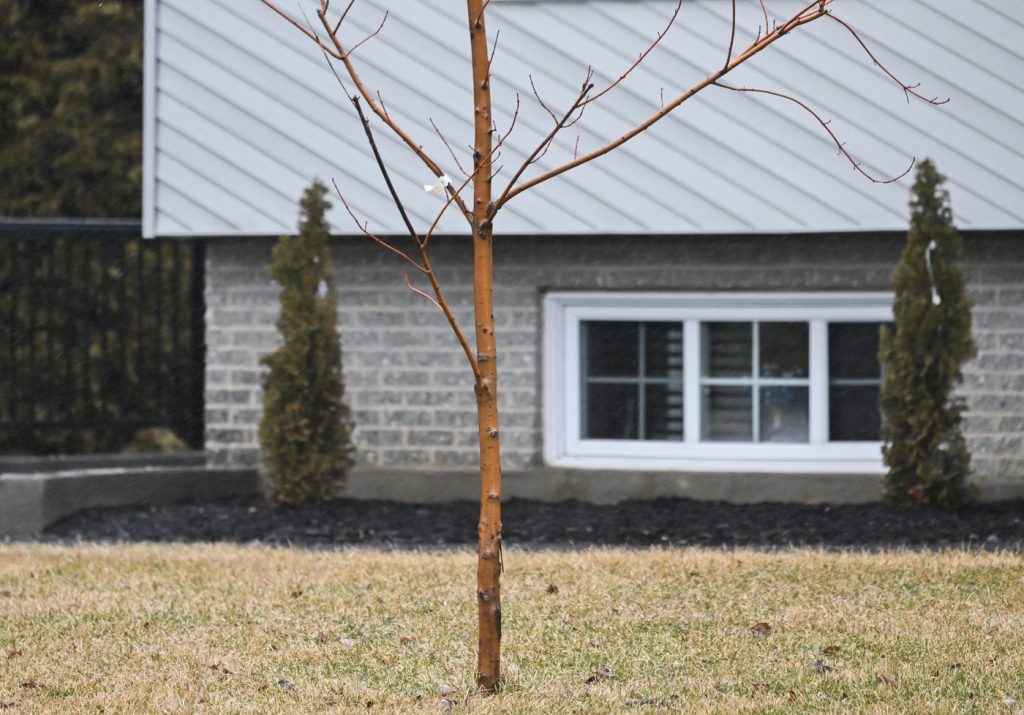Trump pledges 25-per-cent tariff on Canadian products until border issues solved

Posted November 25, 2024 7:38 pm.
Last Updated November 26, 2024 5:31 am.
Donald Trump says he will sign an executive order imposing a 25-per-cent tariff on all products coming into the United States from Canada and Mexico, sending an immediate threat to its closest neighbours that could upend North American trade and supply chains.
The president-elect posted to Truth Social on Monday that the duties will be among his actions on his first day back in the White House on Jan. 20 — Inauguration Day.
“As everyone is aware, thousands of people are pouring through Mexico and Canada, bringing Crime and Drugs at levels never seen before,” the Republican posted.
Trump said the tariff will remain in place until both countries stop drugs, in particular fentanyl, and people from illegally crossing the borders. He said that until those issues are solved, Canada and Mexico will “pay a very big price!”
Canada and the U.S. have one of the strongest and closest relationships, particularly when it comes to trade and border security, said a joint statement from Deputy Prime Minister Chrystia Freeland and Public Safety Minister Dominic LeBlanc. They said Ottawa will continue to discuss border security issues with the incoming administration.
“Canada places the highest priority on border security and the integrity of our shared border,” it said.
But provincial leadership sounded the alarm that Canada can do more to reassure it’s southern neighbour.
“The federal government needs to take the situation at our border seriously,” Ontario Premier Doug Ford posted on social media, adding a 25-per-cent tariff would be devastating to workers and jobs in both Canada and the U.S.
Earlier Monday, Canada’s premiers called on Prime Minister Justin Trudeau to hold an urgent first ministers’ meeting ahead Trump’s return to office.
Alberta Premier Danielle Smith echoed Ford’s concerns in a post on X, saying “Ottawa needs to step up and prioritize this partnership.” British Columbia Premier David Eby posted “Ottawa must respond with strength.” Quebec Premier François Legault posted the “integrity of the border has to be the federal government’s priority” and everything must be done to avoid the tariffs.
NDP Leader Jagmeet Singh sent a more stark message to the prime minister, posting on social media that Trudeau cannot keep his “head in the sand.”
“Stand up and fight like hell,” Singh said. “Canadian jobs are on the line.”
Trump campaigned on the promise to slap an across-the-board tariff on all imports. It has caused significant concern, with a Canadian Chamber of Commerce report suggesting a 10-per-cent tariff could take a $30-billion bite out of the Canadian economy.
More than 77 per cent of Canadian exports go to the U.S. and trade comprises 60 per cent of Canada’s gross domestic product.
The tariffs would also cause a major shakeup to the American economy and it’s unclear if Trump would go through with them after campaigning on making life more affordable and increasing the energy market.
Canada is the largest source of U.S. energy imports, and almost all Canadian crude oil exports went to its neighbour in 2023.
“This is extraordinarily concerning,” said Eric Miller, president of Rideau Potomac Strategy Group, a cross-border consultancy focused on trade, supply chains and government affairs.
“It’s a bad situation. It’s going to have a huge impact on investor confidence in Canada. It will have a huge impact on integrated supply chains, the auto sector.”
Miller said Ottawa has to take a “carrots and sticks” approach that shows Canada is dealing with issues at the border while considering a tariff response of its own own.
“It’s going to be all hands on deck,” Miller said.
There were expectations the energy market could get exemptions from Trump’s tariffs, and the president-elect campaigned on making America energy dominant. But experts say it’s best to take the Republican at his word that duties will apply to everything.
Carlo Dade, director of trade and trade infrastructure at the Canada West Foundation, said tariffs against America’s largest trading partners are meant to send a strong message to the rest of the world.
“(He’s) essentially gratuitously attacking them before he’s even in office,” Dade said, referencing an old Chinese proverb about making an example out of someone in order to threaten others.
“If this is a negotiating strategy, he’s just killed a couple chickens to scare the rest of the monkeys around the globe.”
Immigration was a key issue in the election and a majority of voters for both Republicans and Demorcats said improving border security was important.
The wave of migrants reached record levels under President Joe Biden but numbers dropped off significantly, particularly since rules were tightened in June. The number of migrants crossing from Canada is much smaller than at the U.S.-Mexico border, but recent increases caught the attention of Republicans.
Border Patrol data shows about three million encounters at American borders for the 2024 fiscal year — seven per cent were from Canada. Around 20,000 pounds of fentanyl were seized at the border, but only 45 pounds came from the north.
Laura Dawson, an expert on Canada-U.S. relations and the executive director of the Future Borders Coalition, said that means Trump’s demands can be managed.
It’s more likely the tariff is a bargaining chip for the Canada-U.S.-Mexico Agreement, which is up for review in 2026. The trilateral agreement replaced the North American Free Trade Agreement, torn up under the first Trump administration.
Dawson said Canadians should believe the tariff will be implemented in January, but there could be negotiated exemptions. That doesn’t mean there won’t be long-lasting impacts.
“I don’t think these tariffs are going to last for a long time,” she said.
“But what worries me is any imposition of tariffs makes Canada look like a less attractive place to invest.”








